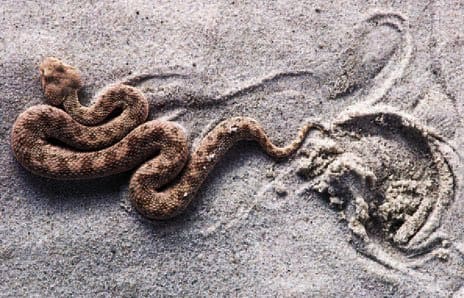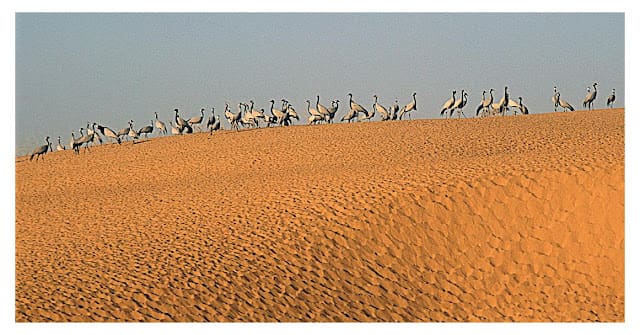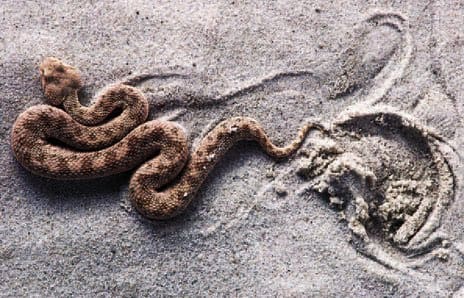 |
| The Sidewinder is a rattlesnake that has adapted to life in the desert with unique sinusoidal-diagonal locomotion that enables it to negotiate smooth sand dunes with ease |
This post concerns a certain question asked after a storytelling session at my son’s school, though this could be any child’s question to his or her teacher.
The story concerned God and his miracles (which, incidentally, are almost always performed for the benefit of Homo sapiens). Here goes: A group of people who lived in a desert were starved of water (for obvious reasons). So they prayed to the rain god and encouraged piety and truthful living among their kin (I am not sure of the details: My son can be notoriously sketchy on the details but jumps onto the core of the matter like a pouncing tomcat). Anyway, the rain god smiled. There were copious rains for many years and eventually the desert was transformed into a lush tropical forest teeming with life. Rivers began to flow again and there were huge harvests. The tribe lived happily ever after. The story would have ended there except for one small question from the back of the class.
“Qu’est-il arrivé à la SideWinder?” (What happened to the Sidewinder?)
Shashwat was not just trying to show off his newfound knowledge of the desert and its denizens (picked up courtesy Sir David Attenborough’s BBC documentary series Planet Earth), the sidewinder being one of the most striking. Its sinusoidal-diagonal traverses across the dunes must have been etched in my son’s memory. But he had a genuine concern: What happens when one species benefits due to an unplanned intervention and others lose out. Or rather, why should this happen at all?
The question was not answered, but therein hangs an ethical dilemma with the anthropomorphic god and biased ethical systems. While we may confuse deserts with desertification, a child’s mind, yet to be clogged with concepts and cares, is perceptive enough to instinctively separate the two. Deserts are ecosystems that have evolved over millennia and their conversion to fertile farmland is akin to chopping down rainforests. It’s our instinctive (or indoctrinated?) association of environment with “green” that tips the odds against the protection of desert eco-systems. Desertification is the result of unsustainable living and often leads to loss of tree cover and arable land.
 |
| Demoiselle Cranes in the desert at Kichan, Rajasthan |
The sidewinder in question would have endured a slow and agonizing death, its wonderful winding glides across the scorching sands slowly turning into painfully awkward slides on wet sands. A twisted and macabre version of Woman in Dunes played out in water.
Text by Sahastrarashmi
Photo of Sidewinder courtesy DK Clipart
Photo of Demoiselle Cranes at Kichan, Rajasthan by Sahastrarashmi
Latest posts by SR (see all)
- Encounter: The Sacred Grove at Oorani - November 28, 2012
- Encounter: Rhododendron, sentinel of the highlands - October 7, 2012
- Manjhi Akshayavat, an immortal Banyan tree - July 17, 2012



One thought on “Le Question: What happened to the Sidewinder?”